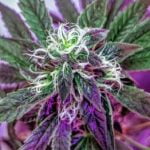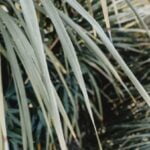Blue spruce landscaping ideas offer a unique and visually appealing option for enhancing outdoor spaces. The distinct characteristics of blue spruce trees make them an ideal choice for landscaping projects, adding beauty and elegance to gardens, yards, and other outdoor areas. In this article, we will explore the various aspects of incorporating blue spruce trees into landscaping designs, from selecting the right location to caring for these stunning trees to create captivating outdoor environments.
To begin, we will delve into the beauty of blue spruce trees, discussing their unique characteristics and visual appeal that make them a standout choice for landscaping projects. From their striking blue-green foliage to their year-round appeal, blue spruce trees can add a touch of natural beauty to any landscape design.
Next, we’ll discuss how to select the right location for planting blue spruce trees in a landscaping project. Factors such as sunlight exposure, soil type, and drainage play crucial roles in ensuring the health and vitality of these trees in an outdoor setting. Additionally, we will explore how to complement blue spruce trees with the best companion plants and flowers to enhance their overall beauty in a landscaping design.
In addition to maintenance tips for caring for blue spruce trees, we will also highlight creative landscaping ideas incorporating these stunning trees. Whether used as a focal point or to create privacy screens or frame pathways, there are numerous ways to integrate blue spruce trees into captivating landscape designs that will be both aesthetically pleasing and functional year-round.
Selecting the Right Location
When planning a landscaping project involving blue spruce trees, it is crucial to carefully consider the location for planting these visually stunning trees. The right location can make a significant difference in their growth and overall health. Factors such as sunlight, soil type, and drainage play a crucial role in determining the best location for blue spruce trees.
Sunlight Requirements
Blue spruce trees thrive in full sun to partial shade, making it essential to select a location that receives adequate sunlight throughout the day. When choosing a spot for planting blue spruce trees, consider any nearby buildings or large trees that may cast shadows and affect sunlight exposure.
Soil Type and Drainage
Blue spruce trees prefer well-draining soil with a slightly acidic to neutral pH. Before planting, assess the soil composition of the chosen location to ensure it provides proper drainage. If the soil is compacted or tends to retain water, consider amending it with organic matter to improve its drainage capabilities.
Spacing Considerations
When selecting the right location for planting blue spruce trees, it’s important to take into account their mature size and spacing requirements. Blue spruce trees typically have a broad, pyramidal form and can reach heights of 30-60 feet at maturity. Ensure that there is ample space between each tree when planning their placement in a landscaping design.
By carefully considering factors such as sunlight exposure, soil type, drainage, and spacing requirements, you can ensure that your blue spruce trees thrive in their chosen location and contribute to a stunning landscaping project.
Complementing Plants and Flowers
When planning a landscaping project with blue spruce trees, it’s essential to consider the companion plants and flowers that will complement their unique beauty. Selecting the right plants can enhance the visual appeal of the blue spruce trees, creating a harmonious and balanced landscape design. Here are some ideas for selecting the best companion plants and flowers to enhance the beauty of blue spruce trees in your landscaping project:
Evergreen Shrubs
Pairing blue spruce trees with evergreen shrubs can create a cohesive and visually stunning landscape. Consider incorporating shrubs such as boxwood, yew, or juniper to add texture and color contrast to the surroundings. The combination of blue spruce trees towering above lush, green shrubs can create a captivating and vibrant outdoor space.
Flowering Perennials
Introducing flowering perennials into the landscaping design can add pops of color and seasonal interest to complement the year-round beauty of blue spruce trees. Plants like purple coneflower, black-eyed Susan, or Russian sage can provide bursts of vibrant hues against the backdrop of the blue-green foliage of the spruces.
Groundcovers
Selecting low-growing groundcovers as companion plants for blue spruce trees can help maintain visual appeal while providing a practical function. Groundcovers like creeping thyme, sedum, or ornamental grasses not only add texture and visual interest but also help suppress weed growth and retain moisture in the soil around the base of the blue spruce trees.
Incorporating these companion plants and flowers into your landscaping design can elevate the beauty of blue spruce trees while creating a well-balanced and visually appealing outdoor space. By carefully selecting plants that complement the unique characteristics of the blue spruces, you can achieve a cohesive and harmonious landscape that enhances the natural charm of these iconic trees.
Caring for Blue Spruce Trees
Blue spruce trees are known for their distinctive blue-green color and unique appearance, making them a popular choice for landscaping projects. However, in order to maintain the health and beauty of blue spruce trees in a landscaping setting, it is essential to provide proper care and attention. This includes attentive watering, strategic fertilizing, and thoughtful pruning to ensure that the trees thrive and enhance the overall aesthetic of the outdoor space.
When it comes to watering blue spruce trees in a landscaping design, it’s important to strike a balance. These trees prefer well-drained soil, so it’s crucial not to overwater them. On the other hand, they can struggle during periods of drought, so regular watering is necessary especially during dry spells.
A good rule of thumb is to water deeply but infrequently, allowing the soil to dry out slightly between waterings. Additionally, mulching around the base of the tree can help retain moisture and regulate soil temperature.
In terms of fertilizing blue spruce trees in a landscaping setting, it’s best to do so sparingly and at the right time. During their early years, young blue spruces benefit from an annual application of slow-release fertilizer in the spring. For mature trees, an application every two to three years should be sufficient. It’s important not to over-fertilize as this can lead to excessive growth that may compromise the tree’s overall health.
Pruning is another aspect of caring for blue spruce trees in a landscaping design that requires attention to detail. While these trees have a naturally symmetrical shape, occasional pruning can help maintain their form and remove any dead or diseased branches. It’s advisable to prune blue spruces in late winter or early spring before new growth begins.
This also prevents sap from leaking excessively from cut branches. With proper care, blue spruce trees can continue to be a stunning and vibrant addition to any landscaping project.
| Tree Care | Care Tips |
|---|---|
| Watering | Water deeply but infrequently; mulch around base |
| Fertilizing | Use slow-release fertilizer sparingly; avoid over-fertilization |
| Pruning | Maintain natural shape; prune dead/diseased branches; avoid excessive sap leakage |
Blue Spruce as a Focal Point
Blue spruce trees are a versatile and visually striking addition to any landscaping project, and they can be utilized as a focal point to add interest and appeal to outdoor spaces. Here are some creative ways to make blue spruce trees a stunning focal point in your landscaping design:
- Create a privacy screen: Planting a row of blue spruce trees along the perimeter of your yard or property can create a natural and visually appealing privacy screen. The vibrant blue-green color of the trees will provide year-round interest while also offering seclusion and separation from neighboring properties.
- Accentuate a water feature: Placing blue spruce trees near a water feature such as a pond, fountain, or pool can help create a tranquil and picturesque setting. The contrast between the cool, blue-green hues of the trees and the shimmering water can enhance the overall visual appeal of the landscape.
- Frame a pathway: Use blue spruce trees to frame pathways, walkways, or garden beds to create an inviting and structured landscape design. The symmetrical shape and unique color of the trees can draw attention to key features within your outdoor space while providing an elegant touch.
Incorporating blue spruce trees as focal points in your landscaping design can elevate the overall aesthetics of your outdoor space, adding depth, texture, and visual interest throughout the year.
By strategically placing these beautiful trees within your landscape, you can create stunning focal points that capture attention while enhancing the natural beauty of your outdoor environment. Whether used for privacy, accentuating water features, or framing pathways, blue spruce trees offer endless potential for creating captivating focal points in landscaping designs.
Creative Landscaping Ideas With Blue Spruce
Blue spruce trees are a versatile and visually appealing addition to any landscaping project. Their unique blue-green color and striking appearance make them an ideal choice for creating a focal point in outdoor spaces. In addition to traditional uses, such as privacy screens and hedges, blue spruce trees can be incorporated into landscaping designs in creative and unique ways. Here are some innovative landscaping ideas that showcase the beauty of blue spruce trees:
1. Privacy Screen: Blue spruce trees can be planted in a row to create a natural privacy screen or living fence around a patio, garden, or outdoor seating area. Their dense foliage and year-round visual appeal make them an attractive alternative to traditional fencing options.
2. Accentuating Water Features: Blue spruce trees can be strategically planted around a pond, fountain, or other water features to create a picturesque setting. The contrast between the vibrant blue-green foliage of the trees and the tranquil beauty of water creates a visually stunning landscape.
3. Framing Pathways: Planting blue spruce trees along pathways or walkways can create a sense of structure and definition in the landscape design. The majestic appearance of these trees serves as a natural frame that guides the eye and adds interest to outdoor spaces.
Incorporating blue spruce trees into landscaping projects offers endless opportunities for creativity and personalization. Whether used as a focal point, accent plantings, or background elements, their beauty and versatility make them an excellent choice for adding visual interest to any outdoor space.
Seasonal Interest
When it comes to selecting the right location for planting blue spruce trees in a landscaping project, it is important to consider factors such as sunlight, soil type, and drainage. Blue spruce trees thrive in full sunlight and well-draining soil, making them an ideal choice for open spaces in landscaping designs.
Additionally, they are adaptable to various soil types, but they prefer slightly acidic soil with good drainage. When planning the layout of your landscaping project, ensure that the location you choose for planting blue spruce trees meets these criteria to ensure their optimal growth and visual appeal.
Incorporating companion plants and flowers into your landscaping design can further enhance the beauty of blue spruce trees. Consider planting colorful perennials or ground covers around the base of the blue spruce trees to add a pop of color and create visual interest.
When selecting companion plants, it’s essential to choose species that are compatible with the growing conditions required by blue spruce trees. This will not only complement the overall aesthetic of your landscaping project but also create a harmonious and visually appealing outdoor space that showcases the unique characteristics of blue spruce trees.
To maintain the health and appearance of blue spruce trees in a landscaping setting, proper care is essential. This includes regular watering, especially during dry periods, as well as fertilizing in early spring to support healthy growth. Pruning is also important for removing dead or damaged branches and maintaining the desired shape of the tree. By following these care tips for blue spruce trees, you can ensure that they remain vibrant and visually appealing components of your landscaping design.
| Landscaping Tip | Description |
|---|---|
| Location | Choose an area with full sunlight and well-draining soil |
| Companion Plants | Select compatible species for added color and visual interest |
| Care Tips | Regular watering, fertilizing in spring, and pruning for maintenance |
Maintaining Aesthetics
In conclusion, landscaping with blue spruce trees offers a myriad of opportunities to create stunning outdoor spaces. The unique characteristics and visual appeal of blue spruce trees make them an ideal choice for landscaping projects, whether you are looking to create a focal point, enhance the overall design, or add seasonal interest to your outdoor space.
By selecting the right location for planting the trees and carefully choosing companion plants and flowers, you can ensure that your blue spruce landscaping design thrives. Additionally, proper care and maintenance, including watering, fertilizing, and pruning, will help keep the trees healthy and attractive.
When it comes to creative landscaping ideas with blue spruce trees, the possibilities are endless. These versatile trees can be used to create privacy screens, accentuate water features, or frame pathways in your outdoor space.
Their year-round appeal further adds value to any landscaping project; from their vibrant blue-green color in the spring and summer to their winter charm when covered in snow. With proper maintenance techniques such as managing growth and preventing common issues like browning or browning of needles, you can ensure that your blue spruce landscaping continues to look its best throughout the year.
Incorporating blue spruce trees into your landscaping design not only adds natural beauty but also brings a sense of tranquility and elegance to your outdoor space. Whether you are aiming for a formal garden style or a more relaxed natural landscape design, the versatility of blue spruce trees allows for endless creativity in achieving your desired aesthetic.
With these tips on selecting the right location, caring for the trees, creating complementary plant combinations, and maintaining aesthetics, you can confidently incorporate blue spruce trees into your landscaping project with stunning results.
Frequently Asked Questions
What Looks Good With Blue Spruce Trees?
Blue spruce trees look good when paired with plants that have contrasting colors and textures, such as variegated ornamental grasses or dark evergreen shrubs. They also complement brightly colored flowers like yellow or red tulips.
How Far Apart Do You Plant Blue Spruce Trees?
When planting blue spruce trees, it is recommended to space them at least 15 to 20 feet apart. This allows enough room for the trees to grow and spread out without crowding each other or other plants in the area.
What Are the Disadvantages of the Colorado Blue Spruce?
Some disadvantages of the Colorado Blue Spruce include its susceptibility to certain pests and diseases, such as spruce needle rust and spider mites. Additionally, its sharp needles can be painful if touched, which may not be ideal for households with children or pets. Lastly, its large size at maturity can sometimes pose a challenge for smaller yards or landscapes.

Welcome to my gardening blog! I am passionate about plants and enjoy sharing my knowledge and experiences with others. In this blog, I will write about everything related to gardening, from tips on how to get started to updates on my own garden projects.





